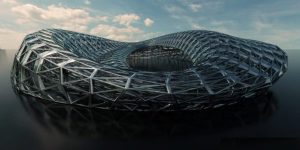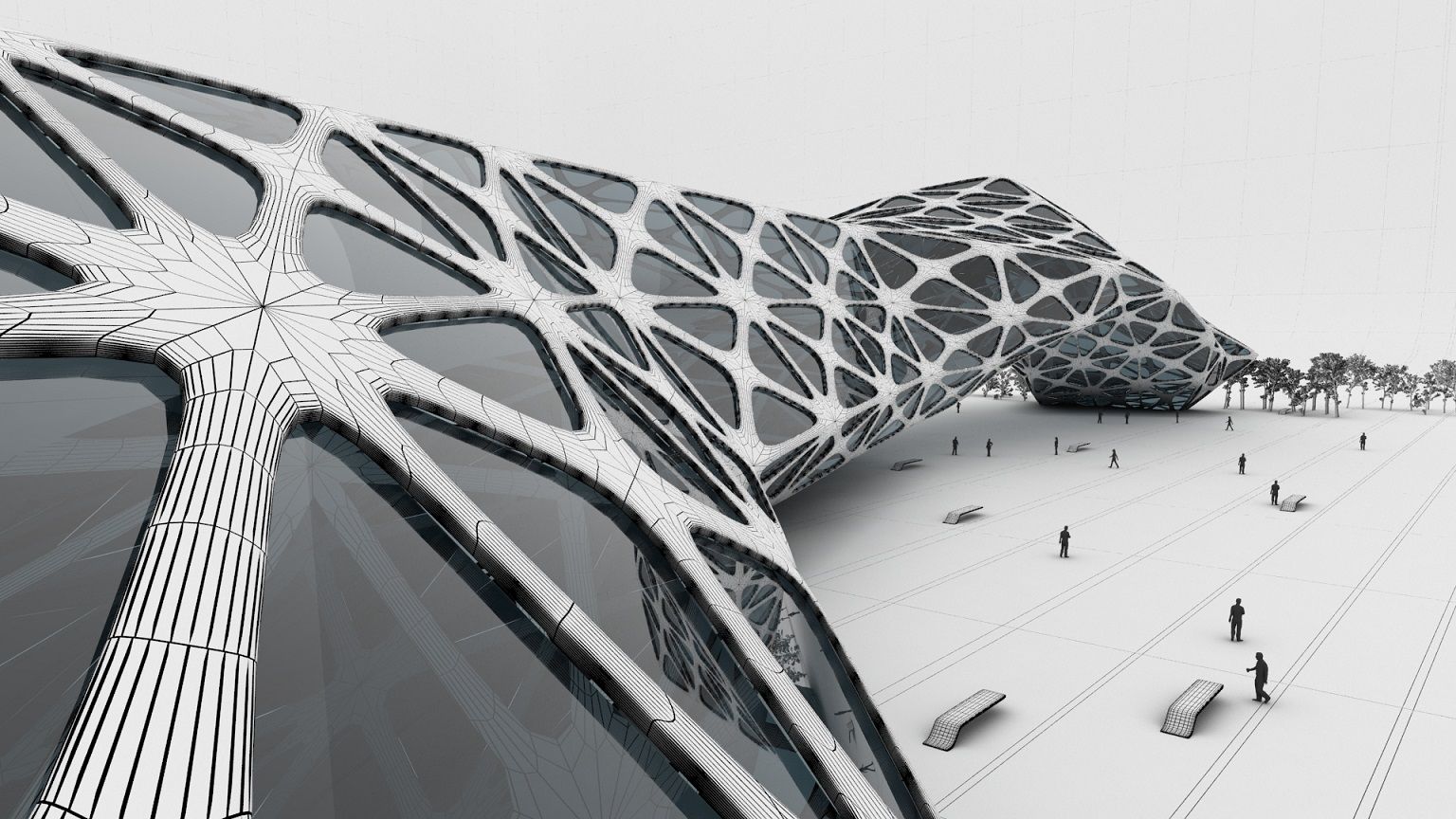Architects are slowly turning to parametric technologies. So, is it time for everyone to embrace this algorithm-based concept?
As technology progresses, all industries will have to adapt and evolve. New tools are emerging all the time, and some of them can flip the landscape upside down.
If you’re a part of that landscape, you don’t have a choice. You can either embrace the wave of change or get left behind.
Parametric design is one of those technologies.
Parametric design is a design process that sets up the structural geometry of a project through parametric modeling techniques. This helps determine both structural form and members. It then proposes various options in structural form so the structural design options can be iterated to architects and clients. It makes the design process easier to finalize.
However, this particular modelling technique has managed to stir controversies. Specifically, some experts claim that computers are taking over the architect’s traditional place.
But is that really the case?
And what is the so-called parametric design they’re keeping an eye on?
In simple terms, it’s a process that uses parametric models at its base. With the help of a computer algorithm, it sets up the structural geometry of a particular project.
Basically, it proposes various geometric options that the user (in this case, most likely the designer) can use to alter and adjust the structure.
Some of these forms may defy conventional architectural norms.
But is parametric design inevitable in the future of the industry? Keep reading to find out more.
What Is Parametric Design?
Here’s how parametric design works.
First, you enter the geometrical parameters into a design tool. Then, the tool uses computer processing to design relations between these parameters, hence the name.
This complex process creates a hierarchy of possible variables. And it’s all thanks to geometrical and mathematical relations.
Afterwards, the designer uses these variables to explore design possibilities. It allows the architects and designers to play with the digital fabric of the structure. At the same time, they can be certain that they can replicate the construction in real life.
This brings us to a key point:
You don’t have to waste time (and money) on trial and error.
Since you’ll be doing everything with the tool, you can take human error out of the equation and minimise manual repetitions.
The first application of parametric design was an analogue computational design. It was done by famous Catalan architect, Antonio Gaudi, who used it to design a model of the Church of Colonia Guell.
He tied hundreds of strings and weighed them down with birdshot. This left the model of the building hanging upside down. A mirror at the bottom displayed how the church would look from the top-down.
But what’s the point of this design? Well, he could adjust each string to change the shape of the building’s various details (e.g. arches or ceilings). That one change impacted all of the other arches connected to it. It was a proper analogue parametric modelling.
You may have seen a lot of examples of parametric design in real life. Today, most of the world’s oddly-shaped structures that went up fairly recently are at least partly parametric.
It’s particularly common in the design of sports venues, or at least parts of them. If you’re not aware, Aviva Stadium in Dublin is the first stadium to be completely designed with parametric modelling.
Moreover, most modern stadium roofs utilize parametric and 3D modeling concepts.
You’ll find plenty of examples of parametric structures online. But is this concept a step in the right direction?

The Benefits of Parametric Design
Parametric tools are taking over a number of aspects in design. For example, the gaming and movie industry has been using parametric modelling for a while. It really has uses in various industries.
So, let’s find out some of the key benefits of this designing concept.
#1 –Flexible yet Beautiful Designs
Take a look at some of the most famous parametric structures in the world. The Metropol Parasol in Seville, Spain, the Canton Tower in Guangzhou, China, are just a few of them.
There’s beauty in the asymmetry and structural chaos of these buildings. On the other hand, they don’t give off any air of dysfunction. That’s the beauty of parametric modelling.
It gives you flexibility while still putting you in the realm of natural laws.
Talented mathematicians and designers could do it manually, albeit on a much smaller scale. But for entire stadiums, hotels, and museums, you’ll need the aid of computer modelling.
#2 – A Clearer View of the Model
You’ll notice two essential visual upsides to this concept.
First, it allows you to start with simple objects and minimal details. You can visualise the final product and make adjustments as you move along.
This way you don’t limit yourself with the end result. There are no clearly defined shapes, lines, and lengths. So, you’re free to move as you please.
The final design could look drastically different but the core structure will remain intact.
On top of that, all models have a solid 3D structure. You can view every corner and every angle of your model with ease. This allows you to spot any mistakes you might have missed otherwise.
#3 – It’s Cloud-Based
This is a somewhat underrated aspect of parametric design.
Most models today require the input of several team members. It becomes an issue when you have to transfer the project from user to user.
But with parametric tools, the entire project gets stored on the Cloud.
Everyone who has access to the project can make adjustments, reshape it, comment on it, or add something new. This significantly reduces the required time and increases efficiency.
#4 – It’s Reusable
All of the data for your parametric project remains saved in the tool unless removed. This means you can use parts of your previous project in designing a new one.
And if the client demands a last-ditch change to certain details, there’s an easy way to do so. That’s going to make you look omnipotent and your client super happy.
Additionally, some tools allow you to create separate parts of your model. This enables you to break one part of your model into multiple components and try out various possibilities.
The Case Against Parametric Design
Despite the obvious upsides of parametricism, some experts argue that this concept is far from perfect.
The loudest case against parametric design comes from Rowan Moore, Guardian’s architecture critic. He argued that despite the promised visual splendour, the intended use of parametric design is questionable.
In line with his argument, he brought up Glasgow’s Riverside Museum of Transport. A stunning blend of architectural art and computing algorithm, the building is the work of Zaha Hadid, who coined the term “parametricism” along with her colleague Patrik Schumacher.
Moore noted that the building looks like an isolated and expensive monument where the primary use is neglected. Instead of solving spatial headaches, it made structures awkward and hard to navigate.
“It should be adaptable, fluid, responsive and connective with its surroundings. But most parametric buildings so far tend to be the opposite,” said Moore.
Therefore, parametric design brings a new issue to the table:
Artificial intelligence can aid the solving of geometrical issues, but is it practical?
Something that seems logical to a computer process may be completely alien to our brain. Thus, the future of parametricism is still up for debate.
What Impact Will Parametric Design Have in the Future
Like it or not, parametricism is slowly conquering the architectural stage. It may be the sign of the times.
Most industries have accepted and embraced tech tools to solve systematic issues. It was only natural that architecture followed suit.
In fact, architecture is only one of the many industries that have utilised this concept.
In 2018, an Amsterdam-based robotics company MX3D managed to 3D print a functional steel bridge. The AI robots did most of the work for the bridge that’s set to span one of the canals near the city’s famous red light district.
This again brings up the question:
What about the future of architecture, design, and construction?
It’s an undeniable fact that we’re approaching the age where AI takes over.
Nowadays, architects can use the power of computer processing to create designs that break the boundaries of our imagination. However, it will take some time to make these structures fully functional and efficient.
It’s undeniable that the construction landscape is changing. Construction companies are adapting to ecologically acceptable solutions. With this, they’re using construction technologies with minimal impact on the environment.
Moreover, the boundaries between private and personal space are starting to fade.
The headquarters of massive companies like Google and Facebook are becoming micro-cities. A place where one building serves various roles, not just entirely for office work.
All of these have opened up an entirely new field of design. It’s one where AI and architects work together to perpetuate an ever-changing world.
Along the Architectural Tide
Parametric design has existed for some time. Contemporary technologies and needs have only accelerated its development.
It’s not easy to predict the future, but the recent happenings signal that parametricism is here to stay.
Parametricism offers the much-needed flexibility and productivity boost that today’s architectural landscape demands. But at the same time, it will take some time to find a perfect blend of art, efficiency, and identity.
Did this story pique your interest in parametric design?
If so, you should know that Archistar is a comprehensive property development platform that you can use to create parametric structures.
Not only that, you can use Archistar to find suitable development sites in Australian and all the way up to finalising the design.
Get started for free: [https://www.archistar.ai/]


